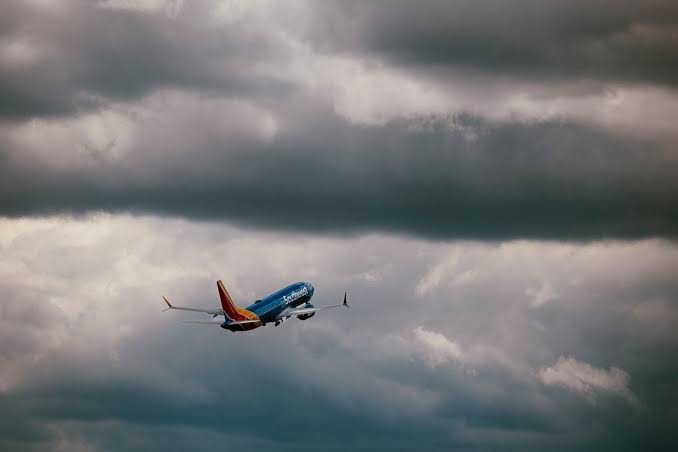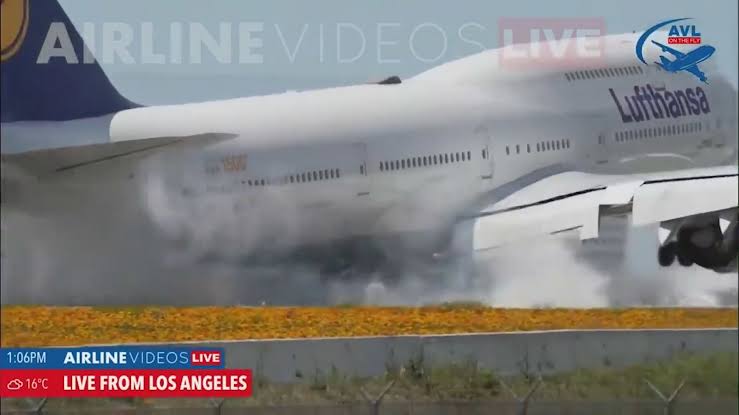Terrifying Drop: Southwest Flight Loses Altitude Rapidly Over Ocean
Terrifying Drop: Southwest Flight Loses Altitude Rapidly Over Ocean
Passengers aboard Southwest Airlines Flight 2876 experienced a terrifying ordeal on Friday evening when the Boeing 737 suddenly dropped 10,000 feet within a matter of seconds over the Pacific Ocean. What began as a routine flight from Honolulu to Los Angeles quickly turned into a nightmare that passengers described as “the most frightening experience of their lives.”
The Incident
According to initial reports from aviation authorities, the incident occurred approximately one hour after takeoff, while the aircraft was cruising at 36,000 feet. Suddenly, an alert sounded in the cockpit indicating a possible pressurization issue. Following standard emergency protocols, the pilots immediately initiated a rapid descent to a lower altitude to ensure the safety of all 162 passengers and six crew members aboard.
The plane plummeted from 36,000 feet to 26,000 feet in less than a minute — a drop that caused oxygen masks to deploy automatically throughout the cabin. Several passengers described the moment as “utter chaos” as the plane shook violently and drinks, personal items, and even small bags flew through the air.
“It felt like we were on a roller coaster — but worse, because you knew you couldn’t just get off,” said passenger Elena Martinez, 34, who was traveling back home after a vacation in Hawaii. “The plane just kept dropping and dropping. People were screaming, crying, praying.”
Inside the Cabin
Witnesses reported that flight attendants moved quickly, shouting instructions to passengers and ensuring everyone had secured their oxygen masks. Some attendants reportedly suffered minor injuries as they attempted to help those struggling with their equipment.
“I thought I was going to die,” said Michael Greene, a 45-year-old businessman from Los Angeles. “There was this overwhelming feeling of helplessness. The masks dropped, the plane shook, and for a second, you just didn’t know what would happen next.”
Parents clutched their children tightly, some passengers gripped their seats with white knuckles, while others tried to comfort those around them. In the midst of the panic, some passengers turned to prayer, while others simply closed their eyes, bracing for the worst.
Despite the fear inside the cabin, the flight crew remained calm and professional. Captain Laura Hensley, a 15-year veteran with Southwest, took control of the situation, speaking over the intercom to reassure passengers.
“We are experiencing a technical issue and are descending to a safer altitude. Please remain calm, keep your seatbelts fastened, and breathe normally through your oxygen masks,” she announced, her voice steady despite the obvious tension.
The Response
Once the aircraft stabilized at 26,000 feet, the pilots evaluated their options. Although the initial plan was to continue toward Los Angeles, the decision was made to divert to the nearest airport to ensure a safe landing and full inspection of the aircraft.
Flight 2876 was rerouted to San Francisco International Airport (SFO), where emergency personnel awaited its arrival. The plane landed safely approximately 45 minutes after the emergency descent, and no serious injuries were reported among passengers or crew.
Paramedics conducted immediate medical evaluations of all passengers upon landing, with several treated for minor injuries such as bruises, anxiety, and hyperventilation. A few were taken to nearby hospitals for observation but were later released.
Southwest Airlines issued a statement shortly after the incident:
> “The safety of our Customers and Employees is our top priority. We commend our pilots and flight attendants for their swift, professional response to today’s incident aboard Flight 2876. We are cooperating fully with the FAA investigation and will provide additional updates as they become available.”
Investigation Underway
The Federal Aviation Administration (FAA) and the National Transportation Safety Board (NTSB) have launched an investigation into the cause of the sudden loss of cabin pressure. Preliminary inspections suggest a possible fault in the plane’s pressurization system, but officials emphasize that it is too early to draw any conclusions.
Aviation expert Daniel Whitaker explained that while terrifying, rapid descents due to cabin pressure issues are relatively rare and that Southwest’s pilots handled the situation correctly.
“When cabin pressure is lost at high altitudes, the air becomes too thin to breathe safely,” Whitaker said. “Pilots are trained to immediately descend to an altitude where passengers can survive without supplemental oxygen. It’s a textbook emergency maneuver, and it looks like the crew did exactly what they needed to do to protect everyone on board.”
Flight data recorders, commonly known as “black boxes,” have been recovered and will be analyzed for more information. Maintenance records for the aircraft are also being reviewed.
Passenger Reactions
Although the situation ended without fatalities, the emotional scars left behind are likely to remain with passengers for some time. Many have praised the professionalism of the flight crew, crediting them for saving lives.
“They were incredible,” said passenger Angela Simmons. “Even when it was pure panic around them, the flight attendants were calm and focused. They saved lives that day.”
Others expressed hesitation about flying again so soon after the terrifying experience. “I don’t know if I’ll ever get back on a plane again,” said Jennifer Lee, a college student from Seattle who was returning from spring break. “It was the scariest moment of my life.”
Southwest Airlines offered full refunds to all passengers aboard Flight 2876, as well as complimentary vouchers for future travel. Crisis counselors were also made available at SFO and later contacted passengers for follow-up support.
Looking Ahead
This terrifying incident serves as a stark reminder of the unpredictable nature of air travel — even when flying with well-regarded airlines and highly trained crews. However, experts stress that commercial aviation remains one of the safest modes of transportation worldwide.
As investigations continue, Southwest Airlines has promised a thorough review of its fleet to ensure no similar malfunctions occur in the future.
In the meantime, Flight 2876’s story will live on — a chilling account of fear, courage, and professionalism high above the vast expanse of the Pacific Ocean.






